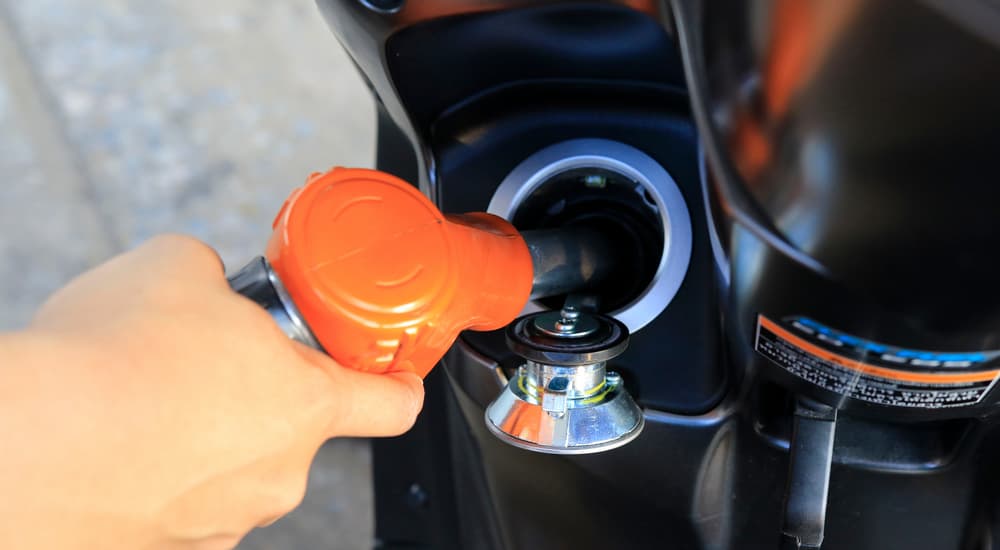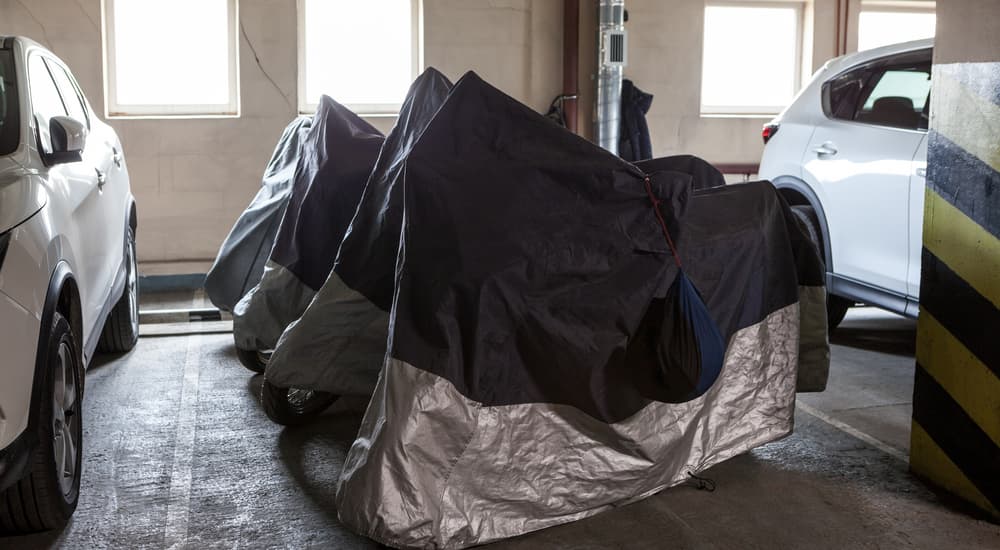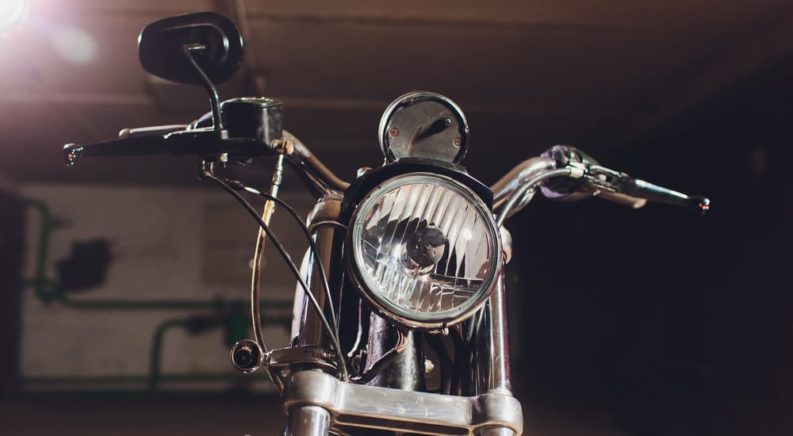Motorcycles can be enjoyed year-round, depending on where you live and whether you have the appropriate gear. Some riders have no problem riding in frigid conditions, while others are happy to store their bikes in the garage until the spring thaw. In any case, winterizing your motorcycle is a must and can be an excellent opportunity to take care of a few annual maintenance tasks you’ve been meaning to get around to for the last few months.
Why Winterizing Is Critical
Ideally, it’d be great if we could pull our bike into the garage and keep it there until warmer days. However, if you want your bike to perform its best, it takes more than that to prepare your motorcycle for the winter. Failing to winterize your bike can lead to costly issues, like cracked tires, brittle chains, or a dead battery. You may even find deposits or sediment have settled in the gas tank and cooling system. Winterizing your bike can prevent these issues and set you up for a more enjoyable ride once spring returns.
It Starts With a Plan
Winterizing your bike starts by looking at the climate and your storage options. Why are these factors important? Let’s say you live in an area where temperatures fall below freezing at night, but the days are still pleasant enough to enjoy a short ride around town. In this case, preparing your bike for total hibernation doesn’t make sense because you’re likely to ride again before spring. Likewise, if your only storage option is a few miles away from home, consider how likely you are to make the drive to get the bike out of storage for a short ride around town in the middle of winter.
Determine Storage Space
Ideally, the best place to store your bike is inside a climate-controlled environment. However, this isn’t realistic or practical since most of us don’t have heated garages or want the expense of renting a storage unit. In this case, a traditional garage will suffice. You can even store your bike outside, but many experts recommend leaving it uncovered to prevent moisture from getting trapped inside the cover and damaging your paint, chrome, and polished aluminum components.
Take It for a Ride
Once you know where you’ll store the bike, take it for a ride around the block or even to the gas station to fill the tank with fuel. Running the engine helps eliminate contaminants or water particles in the oil and heats the chain, making it easier to lubricate. Filling the tank with fuel is also encouraged because it drives out air and water particles that can cause your oil to go bad. While some people prefer to drain their fuel tanks completely, this can be time-consuming since most modern bikes are fuel-injected, and there’s no convenient way to remove the tank and flush all the fuel.

Treat the Fuel
With a full tank, the next step in winterizing your bike is treating the fuel. Since modern gasoline contains a lot of ethanol, it goes bad if it sits for an extended period. Adding a fuel treatment eliminates any space for air and water to accumulate within the fuel. Once the treatment is added, flush fuel throughout the system by running the engine. If you plan to ride your bike on warmer winter days, prepare a can of pretreated fuel that you can use to top off the tank after every ride.
Lubricate the Chain
After running your bike for a few minutes to dispense the fuel throughout the system, the chain is nice and warm. This heat creates the ideal condition for lubricating the chain because the heat absorbs the lube better and more readily spreads around the chain’s integrated rings, rollers, and links. In addition, by lubricating the chain before storing it for the winter, you’re protecting it from salt, rust, and other debris that can accumulate as it sits.
Check and Replace the Oil and Fluids
One of the most beneficial aspects of winterizing your motorcycle is tackling some annual maintenance in the process. This is a great time to check and replace the fluids, like the oil and filter. Oil becomes sludge as it picks up dirt and debris, so new oil is vital to protecting and lubricating the engine while it’s in storage. You’ll also want to check and replace fluids like the transmission fluid or, if your bike is liquid-cooled, flush the coolant since it can become increasingly acidic and cause damage.
Fog the Cylinders
If you’re going to put your bike in storage for less than four months, you don’t have to worry about this next step. However, bikes that are stored for an extended period require a little extra maintenance. During this step, you’ll use fogging oil to lubricate the motor and ready it for long-term storage. First, remove the spark plugs and apply oil into the holes, along the cylinder walls, and on the pistons. Then, turn the engine over a few times to thoroughly coat the components before replacing the spark plugs.
Clean, Wash, and Wax
Your bike accumulates dirt, bugs, water spots, and other debris with every ride, which can be detrimental to the paint if left untreated. So before storing your bike, it’s critical to wash it with a bike-specific cleaner and let it completely dry. Then, wax the bike to seal the finish, polishing the chrome and aluminum parts as you go. You’ll also want to clean your saddlebags, seats, and handlebars using upholstery-specific products, like leather cleaners, that can restore the material’s condition and minimize damage while the bike is in storage.

Prevent Critters and Pests
Mice are notorious for eating everything, from electrical wires to seat cushions. Therefore, taking a few precautions to prevent mice and other critters from wreaking havoc on your bike while it’s in storage is critical. For example, spray some WD-40 into the end of the exhaust pipe and then stuff it with a brightly colored rag or plastic bag to keep pests from crawling inside. You can also plug other holes, like the air intakes, that are convenient hiding spots for rodents.
Protect the Battery
A motorcycle battery can lose its charge when it sits for a long time. While you can remove the battery, it’s often easier to keep it installed and use a motorcycle battery tender that can trickle charge the battery as it sits. This gradual trickle helps the battery maintain a charge and eliminates the hassle of removing it, topping off the battery cells with distilled water, and properly storing it.
Consider the Tires
The tires on your bike can develop flat spots from sitting in one position for too long. While you can move your bike every few weeks to prevent these flat spots, investing in a motorcycle stand is a more convenient option. It eliminates the need to reposition the bike and gives you peace of mind that your tires will still be in excellent condition once the winter season is over.
Winter Is Coming; Is Your Bike Ready?
Is your bike ready for winter? Whether you plan to ride a few times when the temperatures allow or are confident you won’t get back in the saddle until spring, properly winterizing your bike is a great way to oversee routine maintenance and storage-specific needs. With some preparation, you can winterize your bike and ensure it’s always ready for your next ride.

